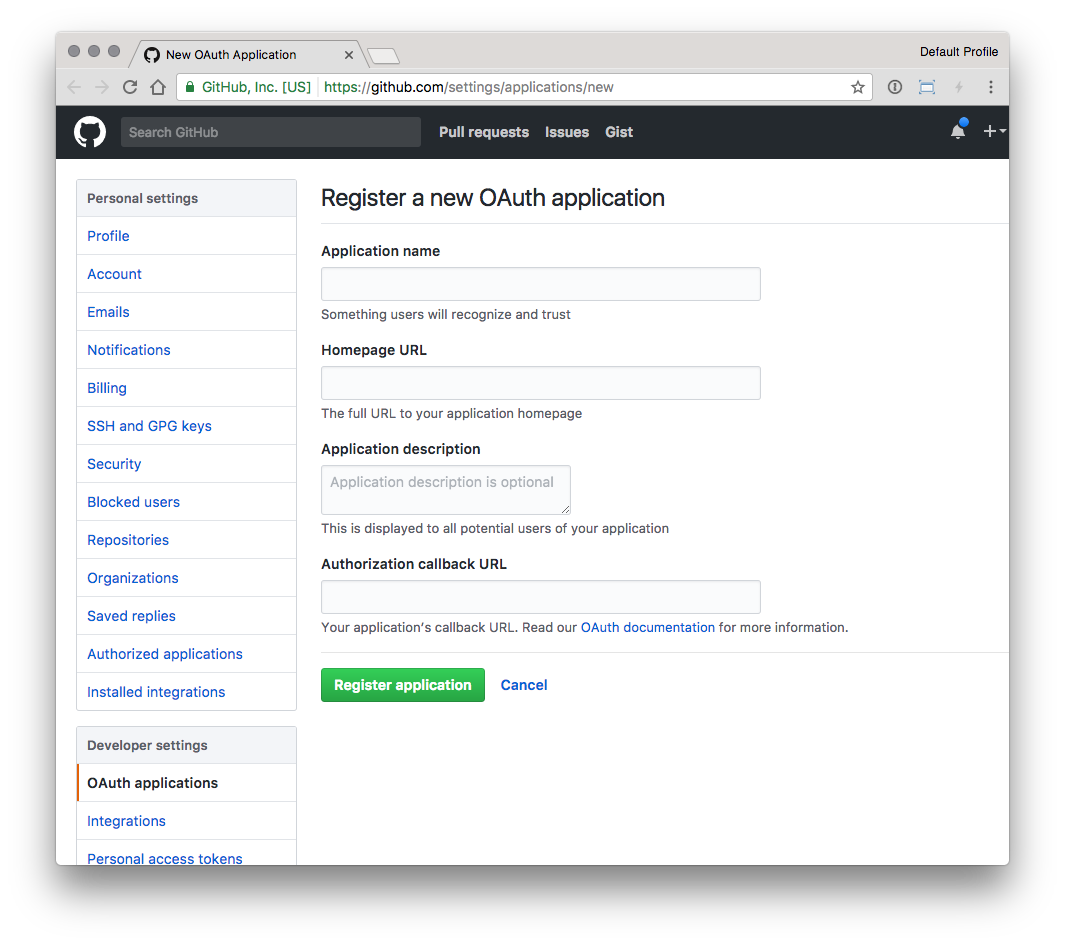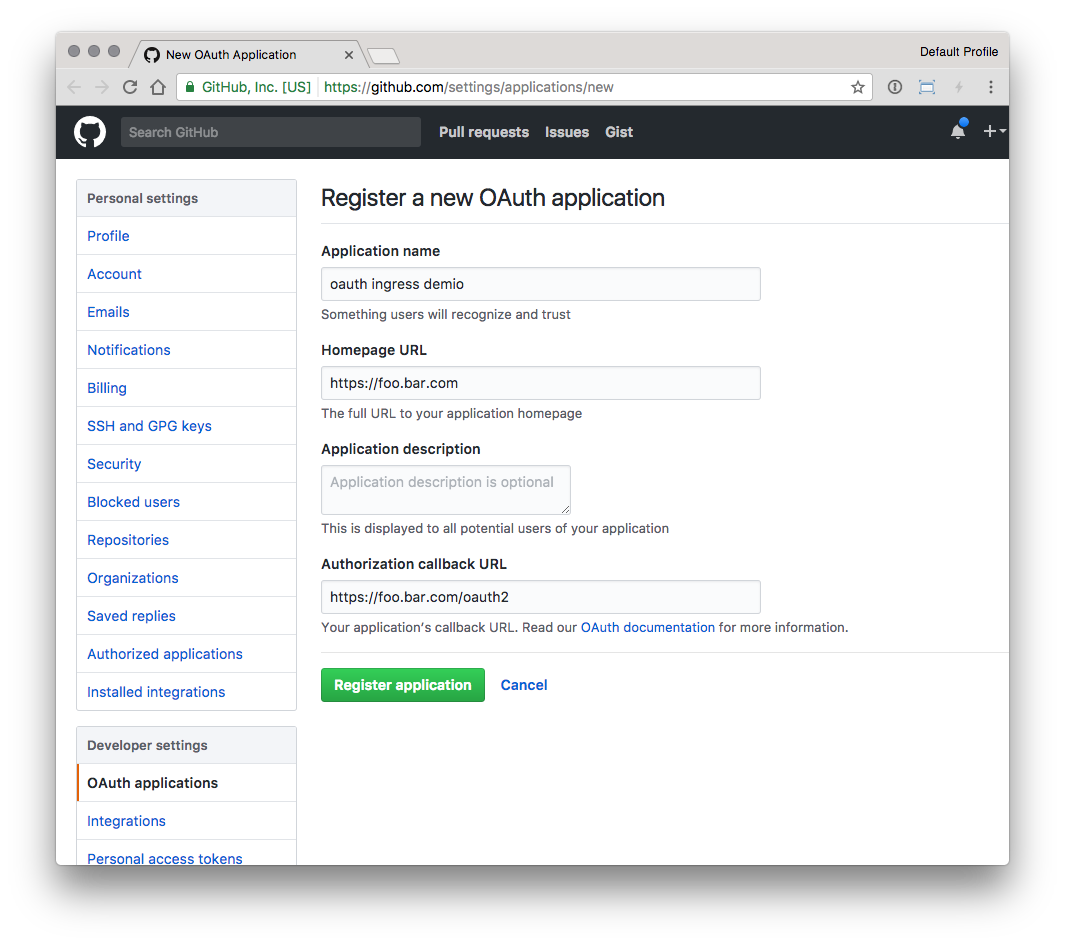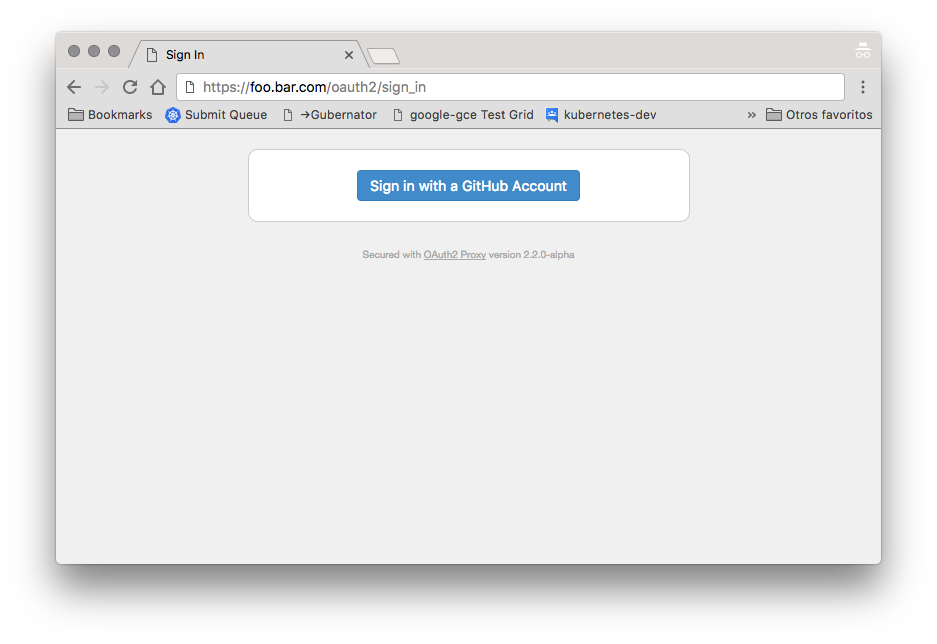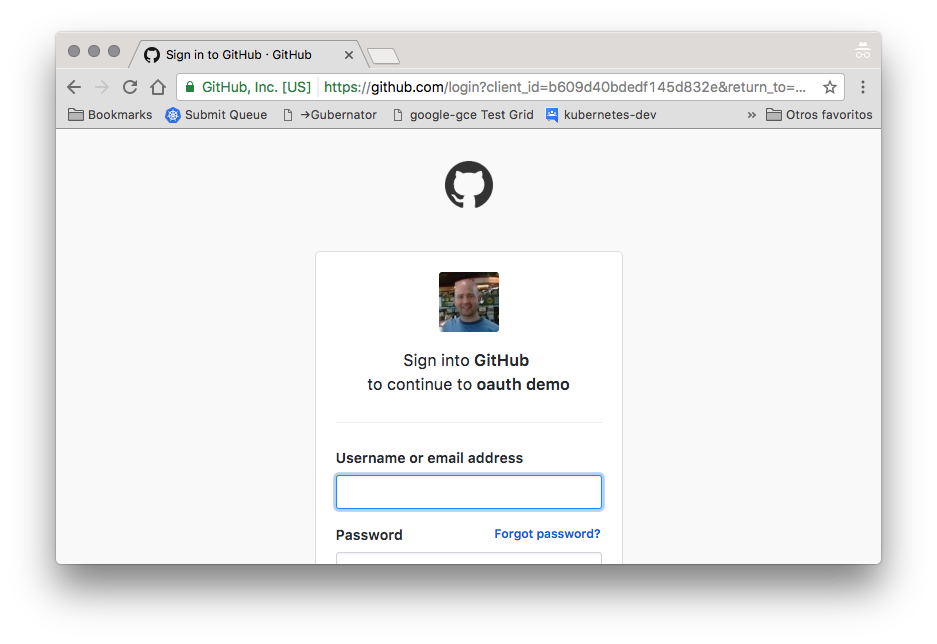External OAUTH Authentication ¶
Overview ¶
The auth-url and auth-signin annotations allow you to use an external authentication provider to protect your Ingress resources.
Important
This annotation requires ingress-nginx-controller v0.9.0 or greater.
Key Detail ¶
This functionality is enabled by deploying multiple Ingress objects for a single host. One Ingress object has no special annotations and handles authentication.
Other Ingress objects can then be annotated in such a way that require the user to authenticate against the first Ingress's endpoint, and can redirect 401s to the same endpoint.
Sample:
...
metadata:
name: application
annotations:
nginx.ingress.kubernetes.io/auth-url: "https://$host/oauth2/auth"
nginx.ingress.kubernetes.io/auth-signin: "https://$host/oauth2/start?rd=$escaped_request_uri"
...
Example: OAuth2 Proxy + Kubernetes-Dashboard ¶
This example will show you how to deploy oauth2_proxy into a Kubernetes cluster and use it to protect the Kubernetes Dashboard using GitHub as the OAuth2 provider.
Prepare ¶
-
Install the kubernetes dashboard
kubectl create -f https://raw.githubusercontent.com/kubernetes/kops/master/addons/kubernetes-dashboard/v1.10.1.yaml -
Create a custom GitHub OAuth application

- Homepage URL is the FQDN in the Ingress rule, like
https://foo.bar.com - Authorization callback URL is the same as the base FQDN plus
/oauth2/callback, likehttps://foo.bar.com/oauth2/callback

- Homepage URL is the FQDN in the Ingress rule, like
-
Configure values in the file
oauth2-proxy.yamlwith the values:- OAUTH2_PROXY_CLIENT_ID with the github
<Client ID> - OAUTH2_PROXY_CLIENT_SECRET with the github
<Client Secret> - OAUTH2_PROXY_COOKIE_SECRET with value of
python -c 'import os,base64; print(base64.b64encode(os.urandom(16)).decode("ascii"))' - (optional, but recommended) OAUTH2_PROXY_GITHUB_USERS with GitHub usernames to allow to login
__INGRESS_HOST__with a valid FQDN (e.g.foo.bar.com)__INGRESS_SECRET__with a Secret with a valid SSL certificate
- OAUTH2_PROXY_CLIENT_ID with the github
-
Deploy the oauth2 proxy and the ingress rules by running:
$ kubectl create -f oauth2-proxy.yaml
Test ¶
Test the integration by accessing the configured URL, e.g. https://foo.bar.com



Example: Vouch Proxy + Kubernetes-Dashboard ¶
This example will show you how to deploy Vouch Proxy into a Kubernetes cluster and use it to protect the Kubernetes Dashboard using GitHub as the OAuth2 provider.
Prepare ¶
-
Install the kubernetes dashboard
kubectl create -f https://raw.githubusercontent.com/kubernetes/kops/master/addons/kubernetes-dashboard/v1.10.1.yaml -
Create a custom GitHub OAuth application

- Homepage URL is the FQDN in the Ingress rule, like
https://foo.bar.com - Authorization callback URL is the same as the base FQDN plus
/oauth2/auth, likehttps://foo.bar.com/oauth2/auth

- Homepage URL is the FQDN in the Ingress rule, like
-
Configure Vouch Proxy values in the file
vouch-proxy.yamlwith the values:- VOUCH_COOKIE_DOMAIN with value of
<Ingress Host> - OAUTH_CLIENT_ID with the github
<Client ID> - OAUTH_CLIENT_SECRET with the github
<Client Secret> - (optional, but recommended) VOUCH_WHITELIST with GitHub usernames to allow to login
__INGRESS_HOST__with a valid FQDN (e.g.foo.bar.com)__INGRESS_SECRET__with a Secret with a valid SSL certificate
- VOUCH_COOKIE_DOMAIN with value of
-
Deploy Vouch Proxy and the ingress rules by running:
$ kubectl create -f vouch-proxy.yaml
Test ¶
Test the integration by accessing the configured URL, e.g. https://foo.bar.com


